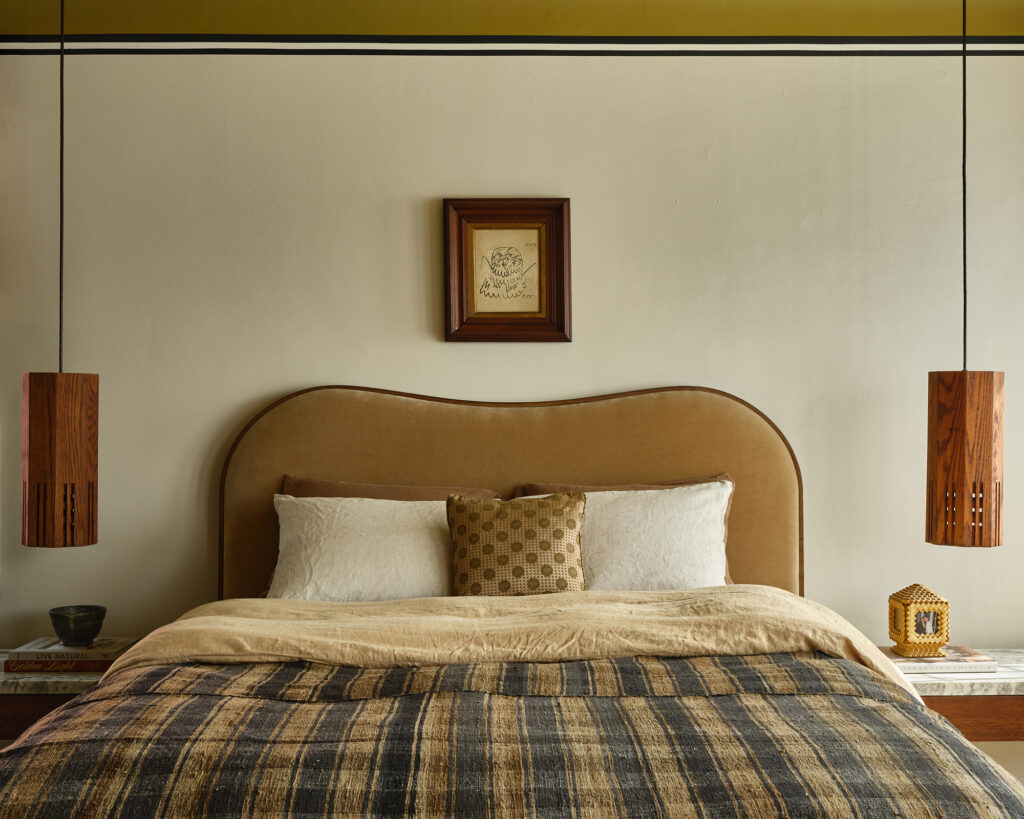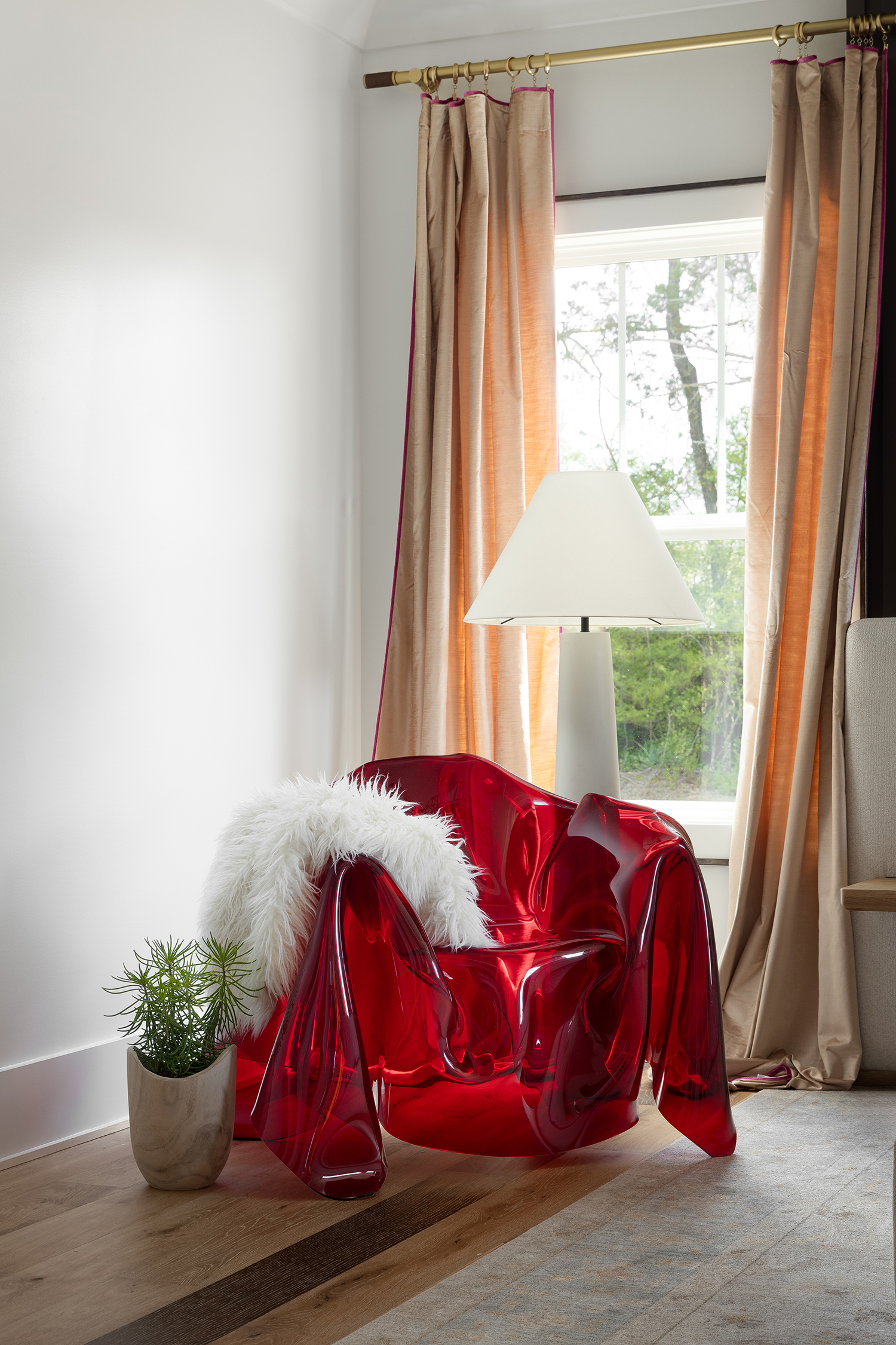Your home tells a story, but is it telling one that’s authentic to you, your family, and your experiences? It’s easy to get lost in the trends and Pinterest boards, but it’s best to stay true to your own personal style.
“Personality is everything!” says Ashley Clark of Skout Interior Design. “Your space should tell the story of who you are and what you love. It’s where you live, after all, so fill it with your favorite things, memories, and people.”
If you need some direction, see Clark’s tips below, along with insights from four more West Coast-based interior designers.
1. Reconsider Your Definition of “Neutrals.”
Design by and Photo Courtesy of Drew Michael Scott
One resounding affirmation from our experts: Neutrals aren’t devoid of personality. If you love the idea of beige and gray, these hues likely bring you a sense of comfort—and there’s scientific research to back it up.
“The human brain actually craves subtle sensory contrast like texture, natural light shifts, organic shapes,” explains Anita Yokota, a therapist-turned-designer and author of Home Therapy. “They activate our parasympathetic nervous system, the part that helps us feel calm and grounded.”
Yokota suggests bringing in natural variation, such as warm woods against stone, tactile fabrics, and greenery that changes with the light. Supporting this note, Drew Michael Scott of Lone Fox says your answer could be mixing up the tones of your beloved neutrals.
“When you see a ‘sad beige’ home, it’s usually a collection of tans and grays that all look very similar,” he says. “While both use neutrals, a brown velvet pillow on a cognac leather sofa is much more interesting than a beige linen pillow on a beige linen sofa. Aiming for a variety of textures will always give your space more personality, even if you’re not adding a lot of color.”
2. Select Colors and Patterns That Speak to You

Design by Drew Michael Scott; Photo by Michael Clifford Photography
If neutrals aren’t for you, follow this simple formula, courtesy of Clark: color + pattern = personality.
“Paint, wallpaper, textiles… don’t be afraid!” she encourages. “If you love moody tones, lean in. If you’re bold and bright, go for it. A stripe or floral or unexpected wall color can completely transform the feel of a space.”
Still hung up on beige and gray? Scott recommends expanding into earth tones. “You can still use everything you have, but include some rusts, yellows, greens, and browns,” he says.
3. Create a Textural or Colorful Disturbance

Design by RB Interiors; Photo by Kevin Brost
Here’s a tip we hear from nearly every designer: Check your layering. If your space feels one-dimensional, it probably needs something to add more interest and personality. “Beige isn’t boring—it’s just lonely,” says Rachel Brown, Founder & Principal of RB Interiors. “The secret is layering textures and adding one piece that doesn’t quite behave. If everything in your home agrees with each other, it’s probably boring. Add a splashy vintage red ghost chair amongst a sea of creams.”
4. Show Your Life Through Photos
“We love adding personal photos in thoughtful ways,” Clark says. “Maybe a shelf moment, or even one whole photo wall. We’re not big on family photos everywhere, but dedicating one area gives it meaning and makes it feel lived-in and personal.”
5. Don’t Underestimate the Power of Decorative Pillows

Design by Christine Markatos Design; Photo by Monica Wang Photo
For a more approachable idea, decorative pillows are a small but mighty addition to any room, according to Christine Markatos Lowe of Christine Markatos Design.
“Whether the aesthetic leans modern or traditional, one way we love to infuse personality into a room is through decorative pillows,” she says. “By choosing pillows made from hand-printed fabrics with lovely, tailored details such as a contrast flange, a simple sofa suddenly looks beautifully composed.”
6. Display Items That Reflect Your Passions
Collectibles instantly add charm to your space—and they often make the best conversation starters. These can be vintage or new, pulled together from your travels and hobbies.
“If you ski, hang vintage trail maps or a photograph of your favorite mountain; if you collect cameras, let’s style them on open shelves,” Clark says. “Those little touches tell people who you are.”
7. Think of Vintage Pieces as Your ‘Secret Weapons’

Design by Christine Markatos Design; Photo by John-Merkl-Photography
Antiques and vintage items are an extension of the collectibles category, bringing more soul into your home. Clark loves them so much, in fact, that she calls them her “secret weapon.”
Markatos Lowe agrees, sharing that vintage accessories “introduce a sense of history, character, and individuality. Their patina, craftsmanship, and unique details create a visual interest and depth, often serving as conversation starters or focal points.”
Your home holds precious belongings and the memories that go with them, and can serve as a reflection of who you are, where you’ve been, and where you’re going.
“When your space feels alive with natural materials and your own story, your brain recognizes safety and belonging,” Yokota says. “That’s where real personality lives.”
We only recommend things we love. If you buy something through our site, we might earn a commission.

